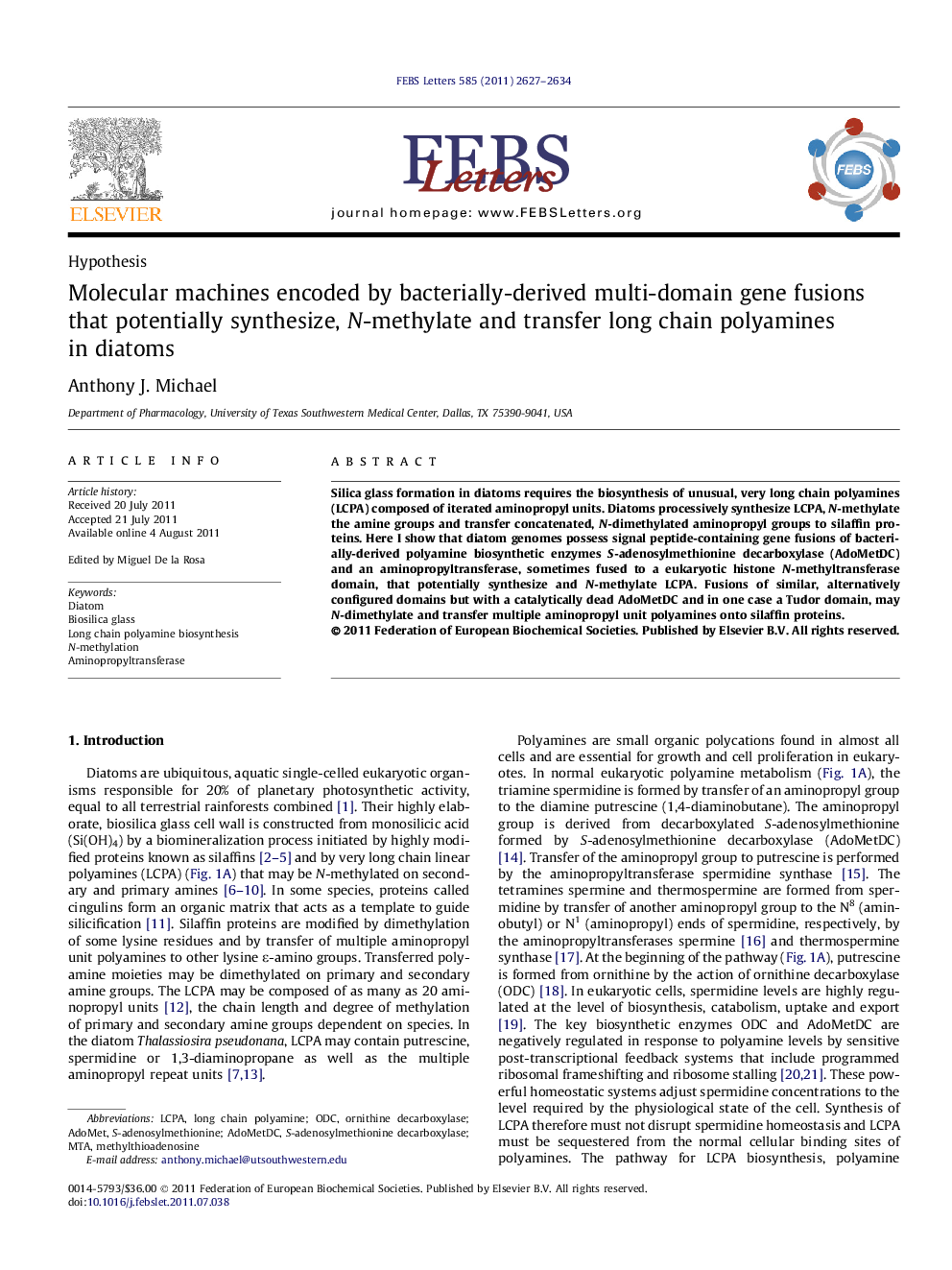| Article ID | Journal | Published Year | Pages | File Type |
|---|---|---|---|---|
| 2047937 | FEBS Letters | 2011 | 8 Pages |
Silica glass formation in diatoms requires the biosynthesis of unusual, very long chain polyamines (LCPA) composed of iterated aminopropyl units. Diatoms processively synthesize LCPA, N-methylate the amine groups and transfer concatenated, N-dimethylated aminopropyl groups to silaffin proteins. Here I show that diatom genomes possess signal peptide-containing gene fusions of bacterially-derived polyamine biosynthetic enzymes S-adenosylmethionine decarboxylase (AdoMetDC) and an aminopropyltransferase, sometimes fused to a eukaryotic histone N-methyltransferase domain, that potentially synthesize and N-methylate LCPA. Fusions of similar, alternatively configured domains but with a catalytically dead AdoMetDC and in one case a Tudor domain, may N-dimethylate and transfer multiple aminopropyl unit polyamines onto silaffin proteins.
► Diatoms contain bacterially-derived polyamine biosynthetic gene fusions. ► The fusion proteins may potentially synthesize very long chain polyamines. ► Chromatin protein modification domains have been recruited to the fusion proteins. ► The chromatin modification SET domains may N-methylate the long chain polyamines. ► Some fusion proteins may transfer polyamines to silaffin proteins for glass formation.
